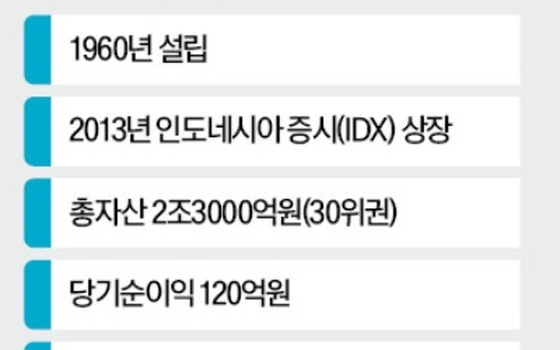입력2006.04.04 09:10
수정2006.04.04 09:12
개도국들은 경제개발을 위해 흔히 선진국을 지표로 삼는다.
이는 국제적인 분위기가 기업구조 및 경쟁시장정책 등 다양한 분야에 대해 선진국의 기준을 강요하기 때문이기도 하고,때때로 개도국이 자국의 경제개발 및 정책을 정당화하기 위해 자발적으로 선진국을 목표로 삼기 때문이다.
한국의 가계대출이 급격하게 증가했을 때에도,몇몇은 이를 적신호라고 경고하기도 했지만 여러 분석가들은 아직은 미국과 같은 선진 경제의 가계부채율보다 낮거나 적어도 높지 않다며 그와 같은 우려를 일축했다.
경험적으로 우리는 후자와 같은 관측이 부적절했음을 알 수 있다.
한국 가계 대출의 급격한 증가는,그 비율이 선진국의 GDP 대비 가계대출률에 갓 도달했음에도 불구하고 경제 전체에 심각한 문제를 야기하고 있기 때문이다.
최근 IMF에서 발행한 '신흥시장에서의 공공채무'라는 보고서는 신흥경제와 성숙경제의 경제지표를 직접적으로 비교하는 데에는 문제가 있음을 시사한다.
지난 몇 년 사이 신흥시장의 공공채무는 계속 증가했고,그 증가비율은 성숙경제보다 높아지기 시작했다.
2002년 성숙 경제국들이 GDP 대비 65% 수준의 공공채무를 보였을 때 신흥경제국들은 평균 71%를 나타냈다.
과거 신흥경제국들은 성숙경제국들보다 낮은 공공채무율을 기록했었다.
그리고 한국과 같은 신흥 개발국들은 그보다 훨씬 적은 공공채무율을 유지하고 있다.
그럼에도 불구하고 여러 신흥시장들이 채무위기를 맞은 반면,2차 세계대전 이후 어떤 성숙경제국도 공공채무에 의해 채무불이행을 선포하지 않았다.
위의 보고서는 개도국의 지속가능한 평균 부채율이 성숙경제국의 평균 부채율보다 낮다는 점을 설득력있게 주장한다.
개도국들의 과세제도는 성숙경제국의 제도보다 비효율적이고 정부 수입 대비 공공 채무율은 비슷한 부채량이라 하더라도 GDP와 대비하면 성숙경제보다 훨씬 더 높다.
선진개발국의 정부수입은 높은 GDP와 금리 그리고 환율변동에 따라 달라지지만,신흥경제국들은 수입이나 수출과 관련해 원자재 가격에 크게 의존하기 때문이다.
엔론이나 월드컴 등과 같이 규모가 큰 기업들의 부도가 미국금융시스템의 안정성에 큰 영향을 끼치지 않았던 반면,아시아 금융위기 당시의 몇몇 재벌의 해체는 한국금융시스템의 지불능력조차 위협했다.
호황기에는 신흥경제국과 성숙경제국의 부채비율을 계속해서 비교하는 것이 가능할지 모른다.
하지만 상황이 악화된다면 같은 부채비율이더라도 신흥경제국들은 쉽게 부채위기에 처할 수 있다.
IMF 보고서의 저자들은 과거 재정실적을 근거로 일반 신흥경제의 지속가능한 부채비율은 자국 GDP의 25%라고 주장한다.
물론 이와 같은 결론에 대해 신흥경제국들이 성숙경제를 빨리 따라잡기 위해 더 모험적인 전략을 사용해야 한다는 반대의견이 있을 것이다.
각 국이 어떤 개발전략을 선택할 지는 결국 해당 국민의 리스크 수용도에 따라 달라질 것이다.
물론 리스크가 높을수록 대가도 높아진다.
분명 자본시장은 리스크가 큰 국가에 대해 더 높은 금리를 요구할 것이다.
견고한 재정정책이 성장을 죽이기보다는 높여왔다는 경험적 증거도 있다.
적어도 GDP의 35∼40%를 초과하는 공공부채는 경제성장에 부정적인 영향을 끼쳐왔다.
아시아국들이 고의로 높은 환율을 유지하기 위해 많은 외화를 보유하고 있다는 주장이 있다.
어떤 이들은 신흥경제국들이 겪은 금융위기와 높은 변동성 때문에 이와 같이 높은 외환보유고는 불가피하며,이는 위기상황의 재발을 피할 수 있는 완충제가 될 수 있다고 한다.
한국과 같이 국내 금리가 달러 금리보다 높을 때에는 높은 외환보유고가 더 손해일 수 있다는 국내 주장도 있다.
이러한 주장은 안전성에는 그에 상응하는 대가가 있다는 말로 대응할 수 있다.
외환보유고에 의한 금리손실은 안전에 대한 일종의 보험 프리미엄이라고 생각하는 것이 좋을 것이다.
안전성을 높이는 것이 국가 위험과 금융비용을 줄인다는 것을 잊지 말아야 할 것이다.
-----------------------------------------------------------------
영어원문
The Price of Risk and the Price of Safety It is common practice to use mature countries as a benchmark for developing economies.
Developing countries are urged from all sides to meet the standards of developed countries in various areas like corporate governance and free market policy.
And,emerging countries themselves voluntarily choose benchmarks from mature countries as goals for their development and sometimes for justification purposes as well.
When Korea's household debt rose dramatically and some observers started to raise doubts about the risks involved,many analysts rejected such concerns by simply pointing at the fact that the ratio of household debt to GDP for Korea was still below or later at least not above the ratios observed in mature economies like the US.In retrospect,we know that this was inappropriate.The dramatic rise in Korean household debt resulted in a serious problem dragging down the whole economy despite the fact that Korea "just" approached the household debt to GDP ratios of mature economies.
A recent IMF publication on "Public Debt in Emerging Markets" sheds some light on the problems of direct comparisons between emerging and mature economies.
Over the last years,emerging markets public debt levels rose and started to exceed debt levels of mature economies.
In 2002 emerging markets had an average 71% of public debt relative to GDP versus 65% for developed economies.
Traditionally,emerging economies had lower public debt levels than mature economies and many newly developed countries,including Korea,continue to maintain much lower levels.
Still,no mature economy has defaulted on its public debt after World War II,whereas we had many emerging market debt crises.Interestingly,in almost 50% of emerging market defaults,the public debt to GDP ratio was below 60%, which is the upper limit set for themselves by the European Currency Union countries.
The paper makes a convincing point that sustainable debt levels are much lower for the average developing country than for mature economies.
Developing countries tend to have less efficient tax systems.Public debt as a percent of government revenues tends to be much higher than for mature economies even at similar debt to GDP levels.In addition,government revenues are less stable as emerging economies have a higher inherent volatility.
They are subject to higher GDP,interest rate and currency fluctuations.
Emerging economies are often highly dependent on commodity prices,either for import or export or both.In addition,they are less diversified and often highly concentrated on a few industries or even companies.
The failure of a few Chaebol in the Asian crisis threatened the solvability of the whole Korean financial system,whereas the bankruptcies of Enron,Worldcom and other quite large companies in the US did not affect the stability US banking system.
A debt level comparable with mature economies might be sustainable in good times.If conditions turn unfavourable,the same debt level can easily cause a debt crisis.
The authors of the IMF study argue that based on past fiscal performance,the sustainable public debt level for the average emerging economy might be as low as 25% of GDP.
The more general conclusion could be that emerging economies should be more careful than mature economies not only with regard to public debt but for household and corporate debt as well.Such a conclusion will certainly invite opposition,as some will say that in order to catch up fast,emerging economies have to revert to more risky strategies.
In the end,it is up to each country to decide on its development strategy based on its peoples" risk preference.
But of course,there is a price to pay for more risky strategies: capital markets will ask a higher interest rate from such countries.And,there is empirical evidence that solid fiscal policies do not dampen but enhance growth.At least,public debt has shown a negative impact on growth once it exceeds 35~40% of GDP.
There are recent claims that Asian countries keep too high Foreign Exchange reserves in order to artificially keep low currency values.
One could argue as well,that the experience of the Asia crisis and the high inherent volatility of emerging economies asks for higher FX reserves as a buffer to prevent any re-emergence of a crisis situation.
There is domestic criticism as well,claiming that high FX reserves come at a high cost,if,like for Korea,domestic interest rates are higher than $ rates.
Such criticism could be countered by saying that safety has its price.
The interest loss on FX reserves can be considered as an insurance premium paid in return for increased safety? not to forget that increased safety lowers country risk and financing costs as well.
![[박영실 칼럼] 어긋난 리더의 이미지 회복하려면 700년 기다려야](https://img.hankyung.com/photo/202404/01.36516821.3.jpg)
![[한경에세이] "메모하세요"](https://img.hankyung.com/photo/202404/07.36042282.3.jpg)
![[데스크 칼럼] 韓제조업의 자연 소멸 막으려면](https://img.hankyung.com/photo/202404/07.14334346.3.jpg)


!['매그니피센트7' 실적 먹구름…지수 혼조 [뉴욕증시 브리핑]](https://timg.hankyung.com/t/560x0/photo/202404/01.36519299.1.jpg)







